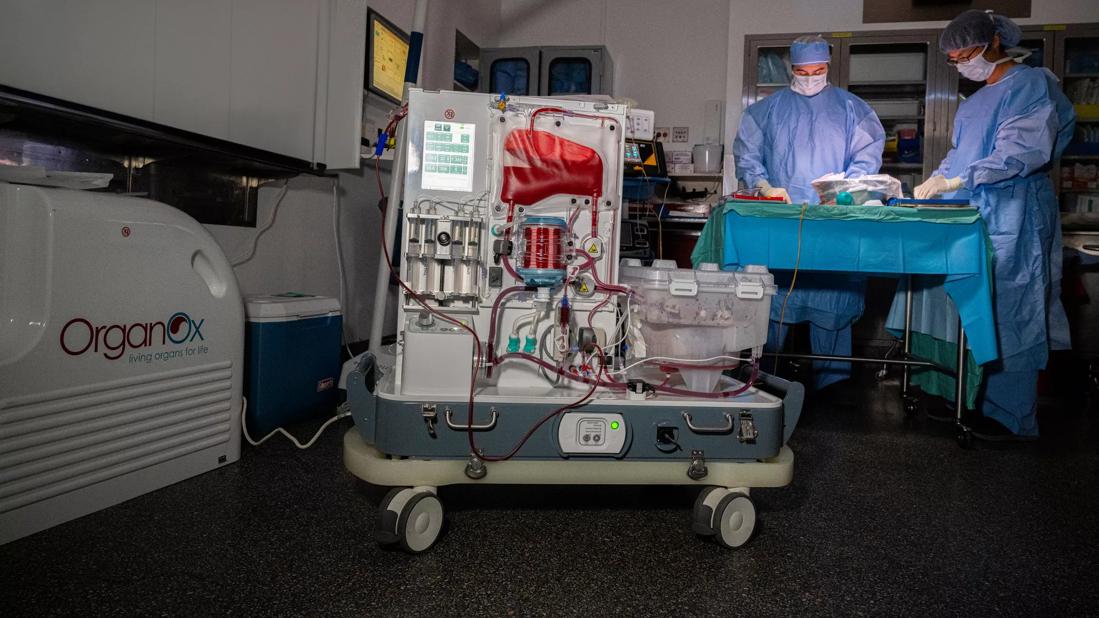New research shows dramatic reduction in waitlist times with new technology

For patients with end-stage liver disease (ESLD), liver transplantation (LT) is the only definitive treatment that supports long-term survival. However, access to viable organs remains a challenge due to long waitlist times, which can lead to waitlist mortality. Following the FDA approval of normothermic ex-situ machine perfusion (NMP) in 2021, there has been a great deal of excitement around the potential benefits of the device — specifically, increased organ utilization, reduction of early allograft dysfunction (EAD) and biliary complications. However, the impact the device has had on waitlist times and mortality has not been fully understood.
Advertisement
Cleveland Clinic is a non-profit academic medical center. Advertising on our site helps support our mission. We do not endorse non-Cleveland Clinic products or services. Policy
A new study from Cleveland Clinic researchers appearing in Liver Transplantation, “The Impact of Normothermic Machine Perfusion and Acuity Circles on Waitlist Time, Mortality and Cost in Liver Transplant: A Multi-Center Experience,” sought to better understand the kind of impact NMP has had on surgeons and patients.
The retrospective cohort study included 2,773 patients from 1/1/2015 to 9/1/2023 at two quaternary-care transplant centers within the Cleveland Clinic Transplant Enterprise system (Cleveland Clinic, OH and Cleveland Clinic Weston, FL). The centers implemented a machine perfusion program using the OrganOx Metra in October 2022.
In the study, the waitlist outcomes were compared by eras — a pre-NMP pre-acuity-circle era (n =1,460), the pre-NMP acuity circle era (n = 842) and the NMP era (n = 381). The outcomes were days from waitlist to LT and mortality without LT. The primary pre-study hypothesis was that NMP would reduce both waitlist time and mortality.
“Before we started using this ‘pump,’ the median waiting time was about 80 days from listing to transplant,” says Koji Hashimoto, MD, PhD, Director of Liver Transplantation at Cleveland Clinic and senior author of the paper. “But 25% of these patients waited longer than six months. Now with NMP, the median wait time for patients is down to two weeks. If you look at how much we transplant versus how long a patient is listed, we’ve more than doubled our rate of transplant with the device. The rate of transplant was 61-per-100-person-years before the 500-mile acuity-circle policy, 99-per-100-person-years in the pre-NMP acuity circle era and 194-per-100-person-years with NMP.”
Advertisement
“One of the key points here is that the device is helping remove some of the subjectivity involved when it comes to organ assessment,” says Chase Wehrle, MD, a surgery resident at Cleveland Clinic and the paper’s corresponding author. “Using the machine perfusion device provides us with very objective parameters to follow regarding which livers can be accepted or not. These parameters generally allow us to accept more livers than we were able to before, and the objectivity involved in the process also gives us more confidence about the livers we are using. We're now accepting a much higher percentage of the available organ offers because we feel confident that we can properly assess the liver and determine whether it's going to work even though conventionally it would have been considered too risky in the past.”
“Probably the strongest impact of this is in patients with lower MELD scores. These patients are generally ‘not as sick’ but can actually have a very poor quality of life because of symptoms related to their liver disease. That score determines your priority on the waitlist. So, these patients, who are still very sick by most accounts, had to wait months and years for their transplant. Now they wait just a couple of weeks. This is really groundbreaking.”
The pump is not just shortening wait times, it is also saving lives, specifically preventing death, or “waitlist mortality”. The absolute rate of mortality-without-transplant decreased from 18.3% (n = 2688/1,460) to just 6.3% (n=24/381) (P < .001) with NMP. The incidence of death-without-LT has dropped by a full 100% from previous eras (P < .001). This translates to improved one-year survival for patients on the waitlist in the NMP era (p = 0.014).
Advertisement
“Another benefit to patients from the increased confidence about the liver quality is that this reduces hospital admissions,” explains Dr. Hashimoto. “Before, we used to call patients into the hospital, but there was a possibility that we would end up sending them home if the liver wasn’t usable. Now, we can use the pump and make sure that the liver is 100% usable before calling the patient. This has reduced wait times and hospital admissions, and we’re transplanting now at a much higher rate.”
“At the end of the day, NMP is saving lives,” says Dr. Wehrle. “People die waiting for liver transplants that they never get. Perfusion has helped us reduce patient mortality by simultaneously allowing us to reduce waitlist times and transplant more livers than before. We’re also transplanting more confidently because we’re able to assess the organs more objectively. The exciting part though is that we’re still in the early stages of perfusion, and we expect wait times to decrease even further.”
Advertisement
Advertisement

Enhanced visualization and dexterity enable safer, more precise procedures and lead to better patient outcomes

Insights on bringing Cleveland Clinic even closer to becoming the best transplant enterprise in the world

Consensus statement aims to increase use of the perfusion technology and raise transplant volumes

Minimally invasive approach, peri- and postoperative protocols reduce risk and recovery time for these rare, magnanimous two-time donors

Minimally invasive pancreas-kidney replacement reduces patient’s pain, expedites recovery

Largest study to date confirms mortality rates similar to DBD transplant and reveals risk factors

Patient receives liver transplant and a new lease on life

More than 30% of patients die when early dialysis is needed after surgery